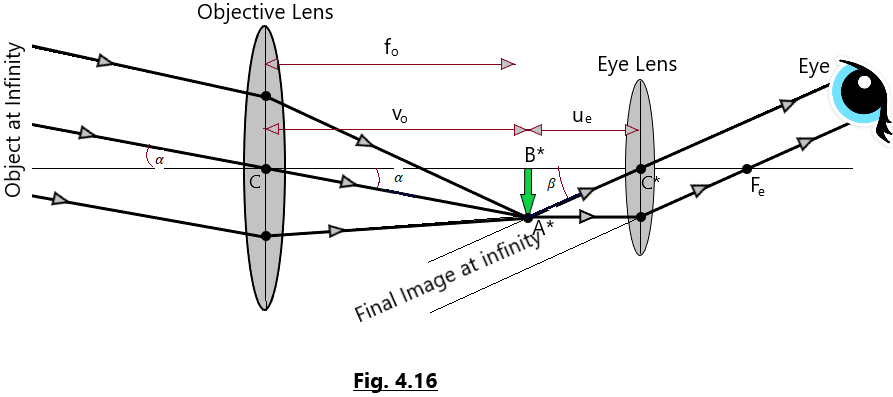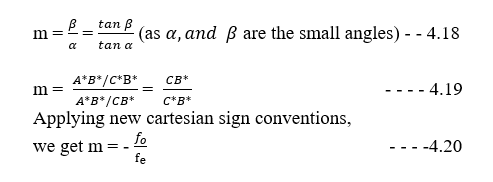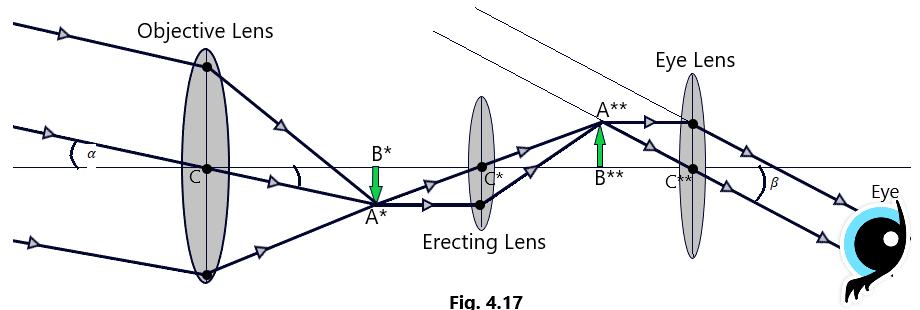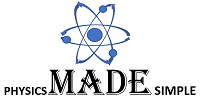Telescope
A telescope is an optical instrument used to observe and see the distant objects magnified, clear and distinct.
Telescopes are one of the most important tools for understanding the universe. They allow us to see distant objects in space and study them in detail. Telescopes use lenses or mirrors to collect and focus light from distant objects, allowing us to see them more clearly. With advances in technology, telescopes have become more powerful and precise than ever before, allowing us to explore further into the unknown.
Telescopes come in a variety of shapes and sizes, each designed for specific purposes. From large observatory telescopes to small portable ones, they all provide unique insights into our universe. The type of telescope you choose will depend on your budget and what you plan to observe with it. They can be used to study the sky in visible light, radio waves, infrared radiation, X-rays, and gamma rays.
Types of Telescopes
Depending upon the type of optical phenomenon that takes place within the telescope to form an image of a distant object, the telescopes are categorized into two types (1) Refracting Type of Telescope and (2) Reflecting Telescope
Refracting Type of Telescopes
These type of telescopes makes use of lenses to see and observe the distant objects. The light rays from the distant objects enter the Refracting Type of Telescopes and undergo refractions multiple times at the refracting surfaces of the lenses(objective lens and eye lens) and form the final image of the distant objects. The refracting type of telescopes are of two types. (A) Astronomical Type (B) Terrestrial Type
(A) Astronomical Type
An astronomical type of telescope is a refracting type which is used to observe and study the distinct images of the distant heavenly bodies like the sun, the different stars, the planets etc. The images formed by this type of instrument are virtual, magnified and inverted. The formation of inverted images of heavenly bodies does not effect the result negatively as the heavenly bodies are of circular size and shape.
Construction of Astronomical Type

This type of optical instrument consists of two achromatic converging lenses mounted coaxially in a metallic tubes. The lens facing the object to be viewed is called objective lens while the other lens through which the image is seen and observed is called eye lens. The objective lens is to be taken of large aperture and also of large focal length while the eye lens is taken to be of small aperture and small focal length. The relative positions of the two lenses can be adjusted by sliding the tube containing eye piece into the tube containing the objective lens with the help of rack and pinion arrangement.
Principle
A real and inverted image of an object placed at infinity (large distance) is formed by the objective lens in its focal plane. Using the rack and pinion arrangement, the distance of the eye piece from the objective lens is so adjusted that the final image is formed at the least distance of distinct vision. In case, the final image is formed by the eye piece at infinity, the the said optical instrument is set in normal adjustment.
Working:
(a) when the final image is formed at least distance of distinct vision
When a parallel beam of light rays from an object at infinite distance is allowed to fall on the objective lens, a real and inverted image A’B’ is observed on the other side of the objective lens at a distance equal to its focal length fo. The image A’B’ formed by the objective lens acts as the an object for the eye piece. Now with the help of rack and pinion arrangement, the distance of the eye piece from the objective lens is so adjusted that the final image if formed at a distance equal to the least distance of distinct vision.
Magnifying Power of Astronomical Telescope:
It is defined as the ratio of the angle subtended at the eye by the by the image formed at a distance equal to the least distance of distinct vision to the angle subtended by the object at the eye when the object is placed at infinity and seen directly. The angle subtended by the object at the eye is practically equal to the angle subtended by it at the objective because the object is placed at infinitely large distance. By definition, the magnifying power is written as

From this Eqn. 4.17, the conclusions can be drawn that the refracting telescope will have larger magnifying power when the objective lens is of larger focal length and the eye piece is of shorter focal length. the negative sign appearing in the expression of magnifying power indicates that the final image formed will be real and inverted.
(b) when the final image is formed at infinity (Position of Normal adjustment)
When an astronomical object is placed at infinity and a parallel beam of light falls on the objective lens, then a real, inverted, and diminished in size, image A’B’ is formed. the position of the eye piece is so adjusted that A’B’ lies at the focus of the eye piece. Therefore, a final image is formed at infinity which is highly magnified and also, the final image is inverted with respect to the object and erect with respect to the image A’B’ formed by the objective lens.
Magnifying Power and Angular Magnification
In the position of the normal adjustment, it is defined as the ratio of the angle subtended by the final image at the eye as seen through the eye piece to the angle subtended by by the object seen directly when the object and the image both lie at the infinity. Due to the reason that the object lies at infinitely large distance, therefore, the angle subtended by it at the eye is practically the same as that subtended by it at the objective.

By definition and using the figure given above, the expression of the Magnifying Power and Angular Magnification can be found as follows.

The equation 4.20 suggests that the magnifying power of the astronomical telescope will be larger when the focal length of the objective lens is more and the focal length of the eye lens is small. The negative sign in the eqn. of magnifying power shows that the final image formed is inverted with respect to the object.
Knowledge Enhancement
- The distance between the eye lens and the objective lens in the normal adjustment of the telescope is equal to the sum of their focal lengths (fo + fe).
- The astronomical telescope forms an inverted image of an object. It does not effect whether the image is inverted or erect in case of celestial objects as these are oval in shape.
- In the settings of the normal adjustment, the final image is formed at infinity, therefore, the magnifying power in this case will be minimum and is given by (m)min. = – (fo/fe)
- The Astronomical telescope, having largest objective lens with a diameter of 102 cm is in use at the Yerkes Observatory in Wisconsin in U.S.A.
- The magnifying power is maximum when the final image is formed at the least distance of distinct vision and is given by (m)max. = – fo/fe [1+(fe /D)]
- In case, when the final image of an object is formed ad a distance equal to the least distance of distinct vision, then the magnifying power of the astronomical telescope is greater than that in the case of normal adjustment due to the factor [1+(fe/D)]>1
(B) Terrestrial Telescope
This type of telescope is utilized to observe and analyze the distant objects placed on the earth like trees, mountains, houses etc. The final image formed in this telescope is virtual and erect which is the necessary and required condition for viewing and studying the all types of the objects on the surface of the earth. It is a refracting type of telescope that is used observe the image as magnified and erect of the objects placed at infinitely large distances on the earth.

An astronomical telescope forms an inverted image of an object, so it is not found usable to view and analyze the objects placed on the large distances on the surface of earth. An additional convex lens is used between the objective and eye lens that makes the final image erect. This lens is called an erecting lens.
As is clear from Fig. 4.17 that the objective lens makes a real, inverted and diminished image A*B* of a distant object in its focal plane. A third lens called an erecting lens is held at a distance equal to the twice of its focal length from the focal plane of the objective lens. As the image A*B* formed by the objective lens acts as the object for the erecting lens at a distance twice of its focal length, therefore, a real and inverted image A**B** of A*B* is formed at the same distance on the other side of the erecting lens.
This image is now erect with respect to the distant object. Now using the rack and pinion arrangement, the position of the eye piece is so adjusted that the image A**B** formed by the erecting lens lies at its principal focus point. In this way, the final image is formed at infinity and is highly magnified and erect with respect to the distant object. The erecting lens only inverts the first image A*B* however, the magnifying power of the terrestrial telescope does not change and remains same as that of the astronomical telescope. Therefore,
The magnifying Power(m)= – (fo/fe )– – – – – – – -(for normal adjustment), and
The magnifying Power(m)= – (fo/fe )[1 + (fe /D)], when the final image is formed at a distance equal to the least distance of distinct vision.
Drawbacks of Terrestrial Telescope
This type of the refracting optical instruments suffer from the following drawbacks. (1) The final image is formed after the light rays from the object undergo multiple refractions which causes the intensity of the final image to decrease appreciably. (2) The length of the terrestrial telescope in the settings of normal adjustment (fo + fe + 4f) which is greater than that of the astronomical one (fo + fe)
Characteristics of a good quality Telescope
A good quality telescope capable of providing better observations and precision results must have the following characteristics.
- A good quality telescope must have large magnifying power (m)= (fo/fe ) which can be achieved by taking the focal length of the objective lens to appreciably larger value.
- A good quality telescope must have large resolving power which is the ability of the optical instrument to observe two closely placed objects clearly and distinctly and is given by (D/1.22) times the wavelength of the light used. The large value of resolving power can be achieved by taking the objective lens of larger diameter (D).
- A good quality telescope must have large value of light gathering power which is proportional to the area of the objective lens(proportional to the square of the diameter of the objective lens). Thus, a telescope will have large light gathering power when the diameter of the objective lens is large and as a result the bright image will be formed.
Limitations of refracting telescope
- Due to the lens defects like the spherical and chromatic aberrations present in the refracting type of telescopes, the final image formed of an object is colored and blurred. Therefore, the object is not possible to study and analyze precisely and correctly.
- The objective lenses of very large aperture are very difficult to manufacture in addition to hold such type of objective lenses firmly in the metallic tubes. This decreases the light gathering power of the instrument.
Reflecting Type of Telescope
Spherical and chromatic aberrations are inevitable with the refracting type of telescopes and can not be reduced to zero, however can be minimized. For the precise and accurate results in the studies of the heavenly bodies, the refracting telescope must possess larger value of magnifying power and light gathering power. For this purpose, the objective lens should be of large aperture (say, 1m) but it is very difficult to manufacture the lenses of large aperture of this range.
Thus, these type of limitations are resolved by replacing the objective lens by a parabolic mirror of large curvature which is free from spherical and chromatic aberrations. This is called as Reflecting Telescope. It was primarily designed by Newton with a view to overcome the drawbacks of the refracting type of telescope. These are mainly categorized into two types.
(A) Cassegrain Telescope
This type of telescope was designed by Guillaume Cassegrain and consists of a concave mirror of parabolic shape of large aperture having a circular hole at its center. A convex mirror is placed in front of the objective and the final image is observed through the eye piece placed near the hole of the of primary mirror as concave paraboloid.

Let us consider that a parallel beam of light falls on the objective from a distant star and undergoes reflection at secondary convex mirror and are converged to point I, before coming to focus at F. The final image is seen through the eye piece. As shown in Fig. 4.18, the first image at F is inverted with respect to the distant star and the second image I is erect with respect to the first image F. Hence the final image is inverted w.r.t. the object.
When, fo and fe are the focal lengths of the objective and eye piece respectively respectively, then the magnifying power in the case, the final image is formed at the least distance of distinct vision, will be (m)= (fo/fe )[1 + (fe /D)] and when the final image is formed at infinity, the magnifying power will be (m)= (fo/fe )
Newtonian Telescope
It consists of a metallic tube at one end of which a concave mirror is fitted while the other end of the tube is kept open.

As shown in Fig. 4.19, a plane mirror is fixed at an angle of 45o with the axis of the tube. A beam of light ray coming from the distant star is incident in the objective and before the rays are focused at F, they are intercepted by the plane mirror and are turned towards the eye piece fitted with one side of the tube. The final image as viewed through the eye piece will be highly amplified, virtual and erect of the distant object.
Advantages and disadvantages of the Reflecting type of telescope
Advantages: A reflecting type of telescope is preferred over the refracting type due to the following list of advantages.
- The image formed in this case if free from the aberrations like spherical and chromatic aberrations as the objective is not made of a lens but is made of the spherical mirrors.
- The mirrors are light weighted as compared to the lenses of the same quality which makes easy handling of the refracting type.
- There is a negligible loss of energy due to reflecting mirror as an objective, therefore, the image formed is brighter in comparison to that formed in refracting type.
- The high resolution image can be formed in the reflecting type by using a mirror of large aperture.
- The paraboloidal mirrors of large aperture can be easily manufactured.
- It is a manufacturing advantage that the mirrors need the grinding and polishing on one side only.
- In reflecting type of telescope, full back of the mirror can be supported contrary to the lens that can be supported on its edge only.
Disadvantages
*The reflecting type of telescope is inconvenient to use as compared to Refracting Type because it requires periodic and frequent adjustments. *These types, due to their large size and bulkiness can not be used frequently for general purpose. * In this type of telescopes, the observer has to sit either near to the focal point of the main mirror or some other mirror will be needed to deflect the light to the observer.
Comparison Between Refracting type and Reflecting Type of Telescope
Refracting Type of Telescope
- The objective is a system of converging lenses.
- The image formed is multicolored as it suffers from chromatic aberration.
- It can be used frequently for any general purpose because of it is handy.
- The image of a distant star is observed faint since light gathering power is small.
- The final image is observed blurred because it suffers from spherical aberrations.
Reflecting Type of Telescope
- The objective is a system of paraboloidal mirrors.
- The final image formed is free from chromatic aberration because the objective is not a lens.
- It can not be used frequently for any general purpose except in astronomy as it is handy.
- The image of a distant star is observed bright since light gathering power is large.
- The final image is observed clear and distinct because it is free from spherical aberrations.
